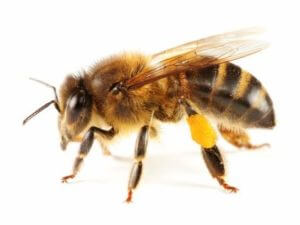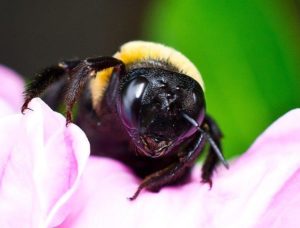What Does a Bee Look Like?
The Mid-Atlantic area is home to several hundred different types of bees. While these pests all have six legs, two antennae, and fuzzy bodies, every species has unique features. The most common bees in the region are honey bees, bumble bees, and carpenter bees.
Bee Image Gallery
When it comes to pinpointing which stinging insects are infesting your home or business, knowing what these bees look like can save you time, money, and stress. It also helps make the removal process faster, safer, and easier for all involved. To help figure out what kind of pest you’re dealing with, check out these photos of bees.
Honey Bees
Honey bees are the smallest in the Mid-Atlantic region. They typically reach about half an inch in length, though the male drones are bulkier than the female workers. The queen of a colony is only slightly larger, measuring at nearly three-quarters of an inch.
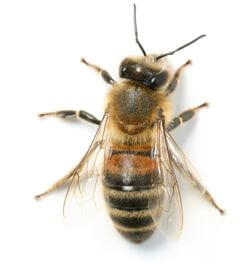
Top view picture of a honey bee
Unlike bumble bees, honey bees have a narrow oval shape. They also have two sets of translucent wings, one of which is smaller than the other. The front half of these insects has a coat of fine hairs, while their back end has a glossier appearance.
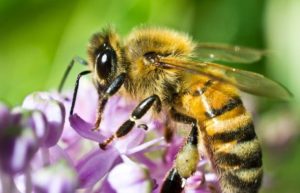
Honey bee pictured on a flower
Honey bees have a highly recognizable black and yellow stripe pattern that carpenter and bumble bees lack. They also have large black eyes and fuzzy, light-colored heads, unlike other species.
Carpenter Bees
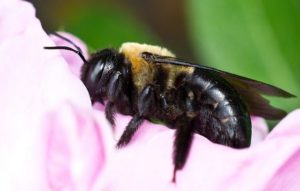
Carpenter bee pictured on a flower
Carpenter bee identification is fairly easy due to their distinct coloring. Though they have the same golden hairs, these pests are much darker than honey and bumble bees. Their jet black bodies often have a sheen that makes them appear blue, green, or purple.
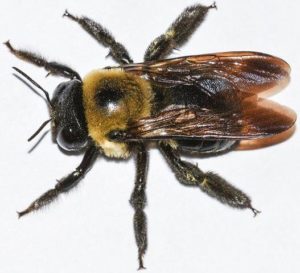
Top view picture of a carpenter bee
Roughly one inch long, carpenter bees are the largest bee species in the Mid-Atlantic. Their robust frame makes them look similar to bumble bees, but these insects have a wider head and slimmer wings.
Since drones and workers are similar in size, it’s easier to identify male and female carpenter bees by their faces. This carpenter bee image shows the black face of a drone. If this were a worker, the entire head would be yellow.
Bumble Bees
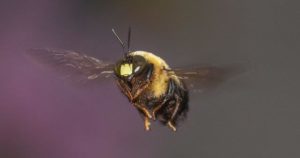
A bumble bee pictured in flight
Bumble bees are bulkier than honey bees yet less round than carpenter bees. The queen grows to just under an inch, while the other bees in the hive are only half that size.
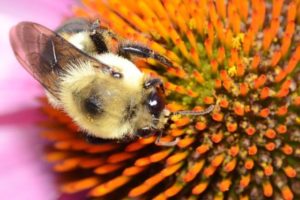
Close-up image of a Bumble bee on a flower

Profile photo of a bumble bee resting on a flower
From these top and side views, you can see how much fuzzier bumble bees are than the other types. They are usually pale gold but can also be white or orange. Unlike the striped patterns on honey bees, these insects either have separate black and yellow sections or one wide band of color across the abdomen.
Importance of Identification
Each species of bee has different behaviors and levels of aggression. Carpenter bees are solitary and docile, while the other breeds live in colonies and defend their nests when threatened. Bumble bees can also sting repeatedly, unlike honey bees, which die after a single attack. Recognizing the different types of bees can help you address infestations safely and efficiently.
It is important to recognize and identify the common honey bee. Honey bees are protected and play a valuable role in the environment. Western Pest Services does not treat for honey bees, but we do handle other types of bee infestations.
